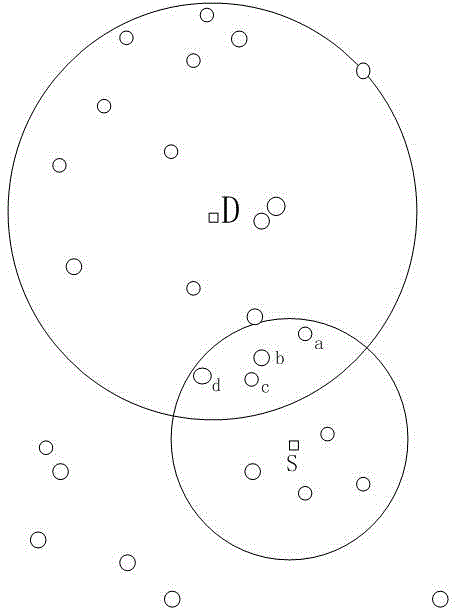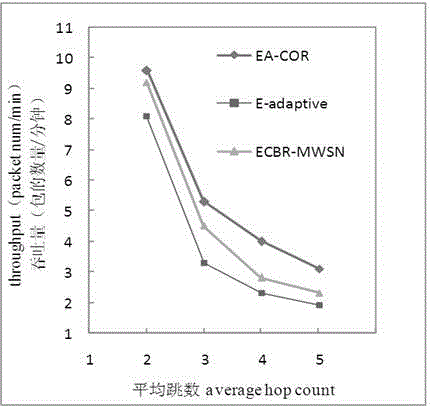Environment-adapted routing method of wireless sensor network for maritime search and rescue
A wireless sensor network and self-adaptive technology, applied in the field of wireless search and rescue, can solve problems such as unstable link quality, high dynamics, and low node routing efficiency
- Summary
- Abstract
- Description
- Claims
- Application Information
AI Technical Summary
Problems solved by technology
Method used
Image
Examples
specific Embodiment
[0053] Cluster head election
[0054] In the example of the present invention, when the wireless sensor network is deployed, the initial energy of the nodes is the same (the node can be a sensor node carried by goods or people in the water, or a sensor node thrown on the sea). LEACH (Low Energy Adaptive Clustering Routing Mechanism) is the earliest and most typical clustering routing protocol. The idea of the protocol is to randomly select cluster head nodes in a round-robin manner to reduce network energy consumption and prolong network lifetime. LEACH randomly elects nodes as cluster heads to ensure that energy is evenly distributed among nodes in the network. The sensor node n randomly generates a random number between (0, 1), and compares it with the threshold function T(n); if the random number of the node is less than the threshold, the node becomes the cluster head in this round, and contributes to the effective Other nodes within the communication distance broadca...
PUM
 Login to View More
Login to View More Abstract
Description
Claims
Application Information
 Login to View More
Login to View More - R&D
- Intellectual Property
- Life Sciences
- Materials
- Tech Scout
- Unparalleled Data Quality
- Higher Quality Content
- 60% Fewer Hallucinations
Browse by: Latest US Patents, China's latest patents, Technical Efficacy Thesaurus, Application Domain, Technology Topic, Popular Technical Reports.
© 2025 PatSnap. All rights reserved.Legal|Privacy policy|Modern Slavery Act Transparency Statement|Sitemap|About US| Contact US: help@patsnap.com



